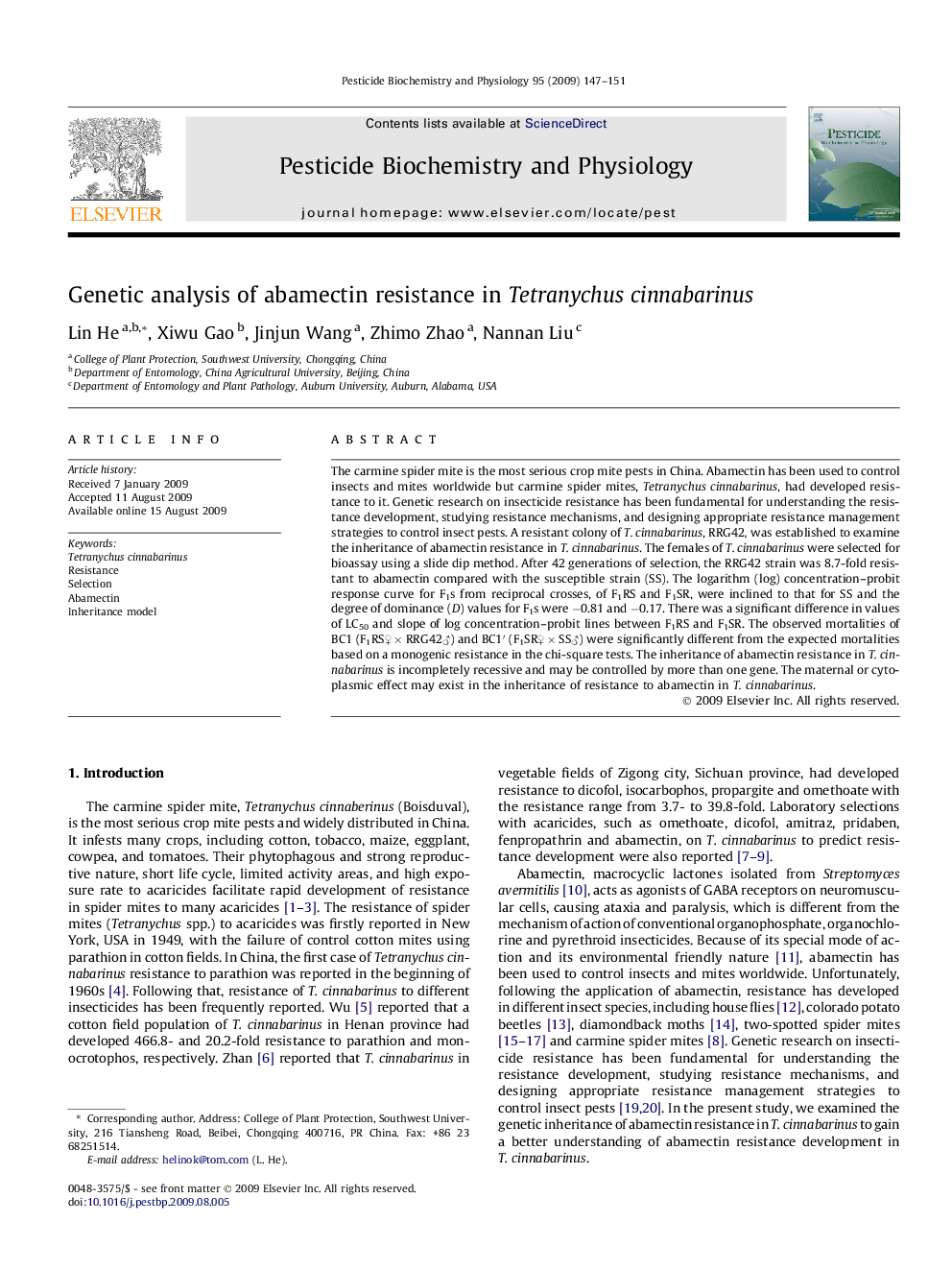| Article ID | Journal | Published Year | Pages | File Type |
|---|---|---|---|---|
| 2009528 | Pesticide Biochemistry and Physiology | 2009 | 5 Pages |
The carmine spider mite is the most serious crop mite pests in China. Abamectin has been used to control insects and mites worldwide but carmine spider mites, Tetranychus cinnabarinus, had developed resistance to it. Genetic research on insecticide resistance has been fundamental for understanding the resistance development, studying resistance mechanisms, and designing appropriate resistance management strategies to control insect pests. A resistant colony of T. cinnabarinus, RRG42, was established to examine the inheritance of abamectin resistance in T. cinnabarinus. The females of T. cinnabarinus were selected for bioassay using a slide dip method. After 42 generations of selection, the RRG42 strain was 8.7-fold resistant to abamectin compared with the susceptible strain (SS). The logarithm (log) concentration–probit response curve for F1s from reciprocal crosses, of F1RS and F1SR, were inclined to that for SS and the degree of dominance (D) values for F1s were −0.81 and −0.17. There was a significant difference in values of LC50 and slope of log concentration–probit lines between F1RS and F1SR. The observed mortalities of BC1 (F1RS♀ × RRG42♂) and BC1′ (F1SR♀ × SS♂) were significantly different from the expected mortalities based on a monogenic resistance in the chi-square tests. The inheritance of abamectin resistance in T. cinnabarinus is incompletely recessive and may be controlled by more than one gene. The maternal or cytoplasmic effect may exist in the inheritance of resistance to abamectin in T. cinnabarinus.
